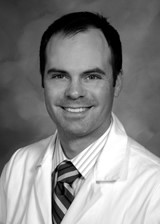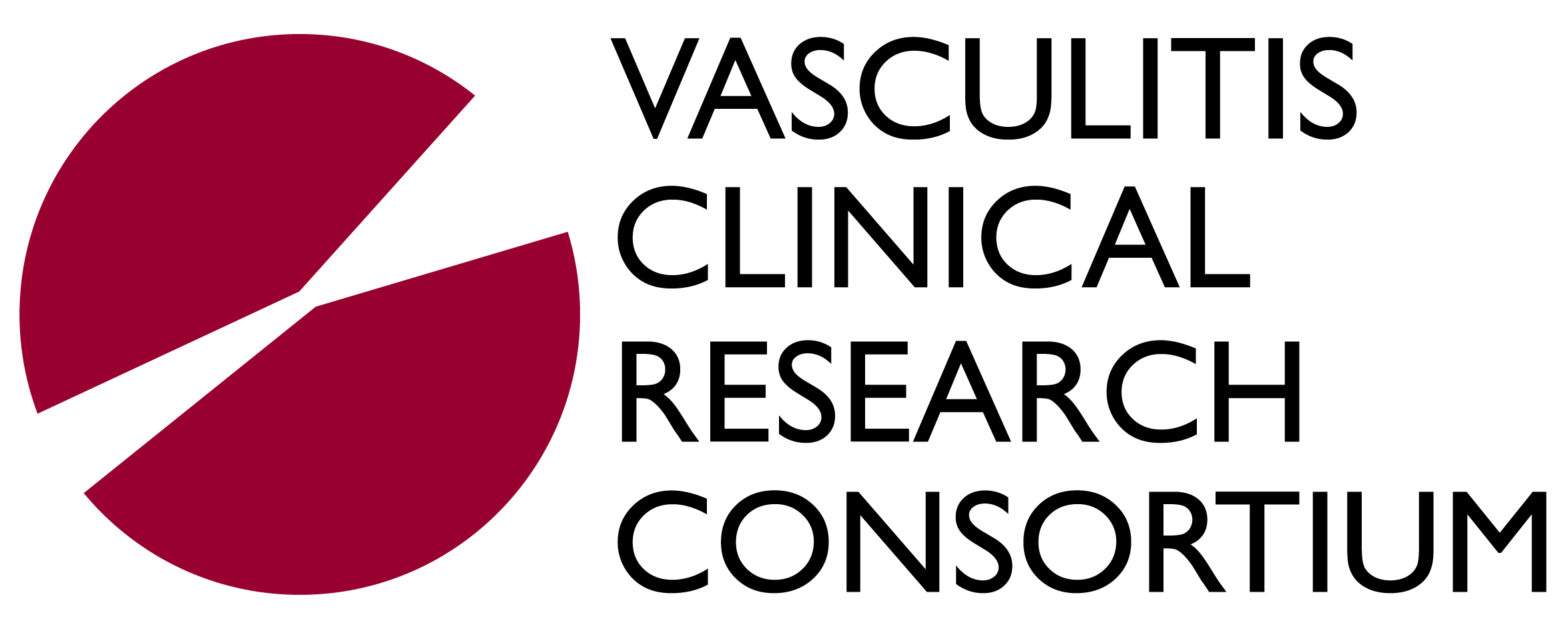Curry Koening, MD, MS

Curry Koening, MD, MS, is an assistant professor of Medicine at the University of Utah and Salt Lake City Veterans Affairs Medical Center. He completed his VCRC Fellowship (2005-2007) at the Cleveland Clinic, with Carol A. Langford, MD, MHS, as his mentor. Dr. Koening is director of the Vasculitis Clinic at the University of Utah and Salt Lake City Veterans Affairs Medical Center, which is a VCRC Clinical Site, and member of the VCRC Steering Committee.
This interview with Dr. Koening was conducted by the Vasculitis Foundation, February 2006.
I first realized that I wanted to be doctor when I was in high school. I grew up in a small town in West Texas. Farming and ranching were how most families made a living in this part of the country. Oil also played a huge part in the local economies. However, lack of primary medical care was a major issue in many of these small towns. Not many doctors were moving to these rural areas to start a practice, leaving many with limited access to medical care. I began medical school with the intent of moving back to rural Texas and starting a general medical practice.
After college I went to medical school at Texas A&M System Health Science Center College of Medicine. I was first introduced to rheumatology during my third-year clerkship. I decided to pursue it as a profession after spending some time on the rotation during my internal medicine residency at the University of Utah. Rheumatology was not unlike primary care. It too needed new, young doctors to help underserved areas, especially where wait times to see a rheumatologist may have been as long as six months. I completed my rheumatology fellowship at the University of Utah in June of 2005 and moved to Cleveland shortly thereafter to learn more about vasculitis at the Center for Vasculitis Care and Research at the Cleveland Clinic Foundation. Because few doctors have trained specifically in vasculitis, patients with these diseases are underserved. Research in this field is also lacking and clinical trials for new therapeutics have lagged behind.
I am fortunate to be receiving support for my vasculitis training from funds provided by the National Institutes of Health through the Vasculitis Clinical Research Consortium (VCRC). It is the mission of the VCRC to train physicians to serve patients with vasculitis and through research provide better therapies, diagnostic tools and identify the causes of these diseases. I am fortunate to be a part of this organization and I look forward to playing a greater role in the care of patients with vasculitis and leading research studies in the future.
The Vasculitis Clinical Research Consortium (VCRC) has four main clinical centers: Boston University School of Medicine, Cleveland Clinic Foundation, Johns Hopkins School of Medicine and Mayo Clinic College of Medicine. The goal of the VCRC is to conduct clinical research in hopes of developing new treatments for patients afflicted with vasculitis. It has been the goal of the VCRC to train new clinicians to care for patients with vasculitis, conduct clinical trials for new drugs in the treatment of vasculitis, and work with vasculitis patient support groups. My goal as a trainee through the VCRC is to maintain this tradition. My training will consist of two years of research, patient care and academic work. This includes not only learning how to better care for patients with vasculitis, but also graduate work in how to perform basic clinical research that will serve to ultimately improve our patient’s daily lives.
My current research interest is in disease monitoring. Little is known regarding how best to follow patients with vasculitis who are considered to be in “remission”. For most patients who are on immunosuppressant drugs, regular blood and urine monitoring are a requirement. How to follow patients who are in a low disease state or even disease remission and not on immunosuppressant drugs is much less clear. Do these patients need regular blood monitoring to detect an early disease relapse? Do these patients need regular CAT scans or chest x-rays to detect an asymptomatic lung relapse of their disease? If so, then how often do they need to be seen and is it cost effective to do regular lab monitoring? These are questions that still remain, and that future research will address.
My first encounters with GPA and other forms of vasculitis were during my residency. As you might guess, these experiences were infrequent. Nonetheless, I had the opportunity to care for a few patients with GPA, Takayasu's arteritis, eosinophilic granulomatosis with polyangiitis (Churg-Strauss), and other forms of vasculitis when they were hospitalized. I learned in my fellowship that patients with vasculitis often have life-threatening complications, but with prompt and proper therapy they can do very well.
The number of vasculitis patients that we see at the Cleveland Clinic varies from week to week. About 50 patients with vasculitis will be seen on average per week. GPA patients make up a large number of those seen and is one of the most common vasculitides that we take care of at the Center for Vasculitis Care and Research. Other vasculitides that we see commonly include Takayasu’s arteritis, giant cell arteritis, polymyalgia rheumatica, polyarteritis nodosa, eosinophilic granulomatosis with polyangiitis (Churg-Strauss) and Behçet’s. The Center for Vasculitis Care and Research has one of the largest populations of GPA patients worldwide. Not only has the Center committed itself to the care of patients with vasculitis but also to increasing our knowledge about these diseases through clinical trials and basic research.
As a fellow in vasculitis my job entails many things:
- Designing and participating in research.
- Participating as a co-investigator in clinical trials.
- Seeing and treating new and established patients who have vasculitis.
- Working closely with clinical staff members who have cared for vasculitis patients for many years and learning from their experiences.
- Being available to other clinicians worldwide to answer questions and to help better serve patients with Vasculitis.
- Teaching medical students and residents basic approaches to diagnosing and treating Vasculitis.
- Completing academic work in a pursuit for a master’s degree in the Clinical Research Scholars Program at Case Western Reserve University.
The importance of communication has been the most helpful thing that I have learned during my training. I have found that taking the time to discuss any concerns that patients have and helping them develop a plan to deal with their disease has greatly enhanced my relationship with my patients. In this day and age of an electronic medical record and e-mail there is no reason that patients should ever feel “left out of the loop.”
I think there are some things that we as physicians and patients can do to make things easier for both. First, I think it is very important for patients to have a vested interest in their disease. In this way, patients will be more apt to report changes that they may recognize as a disease flare. Patients will also be prompted to ask questions that are important to their own care. Patients should be optimistic about the progress that is being made that has led to better care for patients with vasculitis. Progress in the field of vasculitis research cannot happen without the help of patients. I think it is important for patients to keep an open mind when it comes to participating in clinical trials. The more people that are willing to participate in trials, the better our understanding of these rare diseases will be. Patients should also be involved in their local Vasculitis support groups. It is through these groups where patients can learn about new therapies and how they can support future research in this area.
I think the best advice for any vasculitis patient is to recognize that recent medical advances have made not only long term survival but long-term disease remission a reality. Even though disease remission is a reality for almost all patients, a cure is still many years away. Patients should continue to have frequent follow-up visits with their care providers, ask pertinent questions and be involved with their local and national Vasculitis organizations. This also includes patients who have been in disease remission for an extended period of time. These patients also have a high risk of relapse from their disease. Vigilance can prevent complications. Early detection of relapses can lead to early treatment, shorter exposure to immunosuppressant drugs, less morbidity and hopefully a faster return to normal daily living.
I have several goals that I would like to accomplish before my time is complete at the Cleveland Clinic. My ultimate goal is to learn how to design and implement clinical trials for the treatment of patients with Vasculitis. I would also like to be a part in developing new imaging and laboratory modalities that will help how we follow patients in the future. Through my course work at Case Western Reserve University and clinical time at the Cleveland Clinic, I hope also to forge collaborations worldwide with clinicians and researchers who are dedicated to better understanding Vasculitis and the patients we care for. Finally, as any young physician I want to provide the most advanced therapies for my patients in a compassionate clinical setting for which patients can feel a part of.
My plans at this time are to take an academic appointment at the University of Utah in Salt Lake City. Here, in conjunction with the Department of Medicine and Division of Rheumatology, we plan to create a vasculitis center. This will be the first Center in the Western United States. Our goal is to be a tertiary referral center for patients from all over the United States and the World who are afflicted with either GPA or other rare vasculitides. We will also offer clinical trials of new therapeutics to treat patients with vasculitis that would not otherwise be able to participate. We also hope to build a strong relationship with local and national Vasculitis support groups such as the Vasculitis Foundation and maintain a strong collaborative network with the Centers for Vasculitis Care and Research and other Vasculitis centers around the world.

